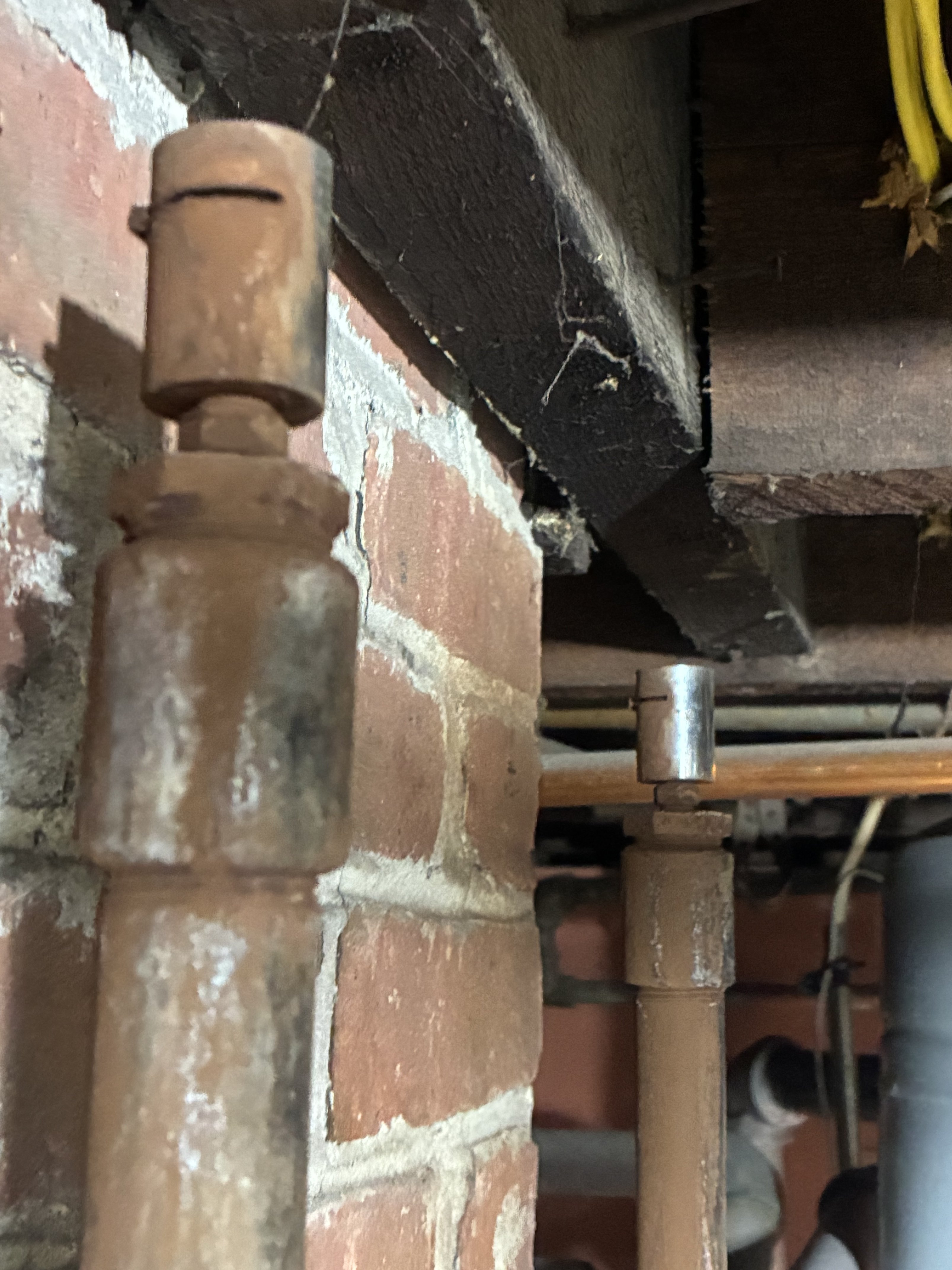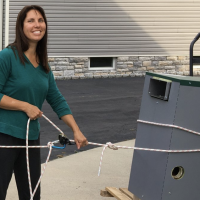What type of Vent on pipe near boiler in basement
Comments
-
Those look like Varivalve adjustable straight valves. They are not appropriate for main venting. They are intended to be used on steam radiators. You will want to remove those and the reducing bushings they are piped into. A Gorton #1, Gorton #2, Hoffman 75, or a Barnes and Jones Big Mouth would be appropriate main vents among others. You can find them at SupplyHouse. How long are your steam mains? Can you provide us a picture further out, maybe someone here can give you a better idea of what size vent you need.
1 -
Updated photos anyone have any ideas of what size vent. Probably 6’-7’ pipe
0 -
-
probably about 1.5”-2” reduced down to 1“ where the wrong valve is.
0 -
And how long is each steam main, from the boiler all the way around to the vent?
All Steamed Up, Inc.
Towson, MD, USA
Steam, Vapor & Hot-Water Heating Specialists
Oil & Gas Burner Service
Consulting0 -
10-12 feet total length to vent
0 -
that seems very short, but if true, then you're fine with Gorton #1 vents
Wow, 45 bucks OMG W!T!F! LOL:
You might try Maid O Mist which is functionally identical:
NJ Steam Homeowner.
Free NJ and remote steam advice: https://heatinghelp.com/find-a-contractor/detail/new-jersey-steam-help/
See my sight glass boiler videos: https://bit.ly/3sZW1el0 -
I don't mean to pick on @bburd, and I've heard this argument from others.
» We need to know the total length and size (diameter) of the steam mains in your basement, not counting the radiator takeoffs or risers to upper floors, to tell you what size main vents you need.I'd like to argue that this is all wrong.
We want to vent the main as quickly as possible. To do that, we need to move the air out as fast as the steam pushes it. This is not to be confused with venting the amount of steam the boiler can produce, because the steam doesn't move nearly that fast. It has to heat the pipe, and that takes time.So firstly, the vents need to remove air as quickly as the steam can displace it.
Secondly, the LENGTH of the main is irrelevant. If it's a mile long, it'll just take that much longer to heat up. While it does, the air will be pushed out at a constant rate.
Thirdly, the DIAMETER of the main influences how quickly it heats up. In that sense, a larger main needs slower venting. I downsized my boiler from 175 MBTU to 118, but my main is 2.5 inches. In other words, more metal than necessary, and it all needs to be heated. It now takes longer to heat up than before, meaning the air gets pushed along more slowly. A smaller-diameter main would heat up quicker, and I'd need larger main vents.
I played with this when my boiler was new, and removing the vent entirely, leaving a 3/4" hole, didn't make the main heat up any faster.
In my system, depending on the time between calls for heat, it takes eight to ten minutes to heat the main, which is about 80 ft long. So it takes a minute to heat ten feet of pipe. The air volume is pi r squared times length, or Pi x 6.25 x 120 cubic inches, or 2356 in^3, or roughly 1.4 cubic feet, or 10 gallons.
That's the amount of air we have to vent every minute until the main is hot all the way.
cheers -matt
0 -
I agree with a lot of what you say there, @mattmich but I will offer a counter argument:
A lot of your assumptions above fail when you are talking about insulated pipes with 2 or 3 heating cycles per hour.
In this case, the main pipes stay warm and don't slow the steam down nearly as much, and so the "speed" (measured in linear feet of main per minute) of the steam becomes greater.
But regardless, I do like timing the steam better than relying on "pipe math". I think it gives a result based much more on reality and less on theory.
NJ Steam Homeowner.
Free NJ and remote steam advice: https://heatinghelp.com/find-a-contractor/detail/new-jersey-steam-help/
See my sight glass boiler videos: https://bit.ly/3sZW1el0 -
And @ethicalpaul and @mattmich I agree with you both! And for another look at it, Cedric is a fairly decent sized boiler (fires at 3.3 gph). The system is fairly decent sized (total of arund200 feet of 2 and 2.5 inch mains).
And the whole show is vented with a stable pressure of 2 ounces per square inch gauge by one Hoffman 75 and one Gorton #2…
My own way of figuring it is different — I look at pressure profiles rather than times — but the end result is the same.
Br. Jamie, osb
Building superintendent/caretaker, 7200 sq. ft. historic house museum with dependencies in New England1 -
@mattmich and @ethicalpaul , the other part of the equation is……. balance.
You want the steam to reach the ends of all the mains, not only quickly, but also at about the same time. Once you accomplish that, the steam is available at every tee where a radiator connects, and will rise to all the radiators at the same time. Balancing the heat in all the rooms is easy when you do it this way.
This is where "pipe math" comes in. Once we know how much air is in each main, we have our starting point for sizing vents. Occasionally we need to make changes from the original sizings, but having that starting point gets the job done faster.
All Steamed Up, Inc.
Towson, MD, USA
Steam, Vapor & Hot-Water Heating Specialists
Oil & Gas Burner Service
Consulting3
Categories
- All Categories
- 87.3K THE MAIN WALL
- 3.2K A-C, Heat Pumps & Refrigeration
- 61 Biomass
- 429 Carbon Monoxide Awareness
- 120 Chimneys & Flues
- 2.1K Domestic Hot Water
- 5.8K Gas Heating
- 114 Geothermal
- 166 Indoor-Air Quality
- 3.7K Oil Heating
- 77 Pipe Deterioration
- 1K Plumbing
- 6.5K Radiant Heating
- 395 Solar
- 15.7K Strictly Steam
- 3.4K Thermostats and Controls
- 56 Water Quality
- 51 Industry Classes
- 50 Job Opportunities
- 18 Recall Announcements





